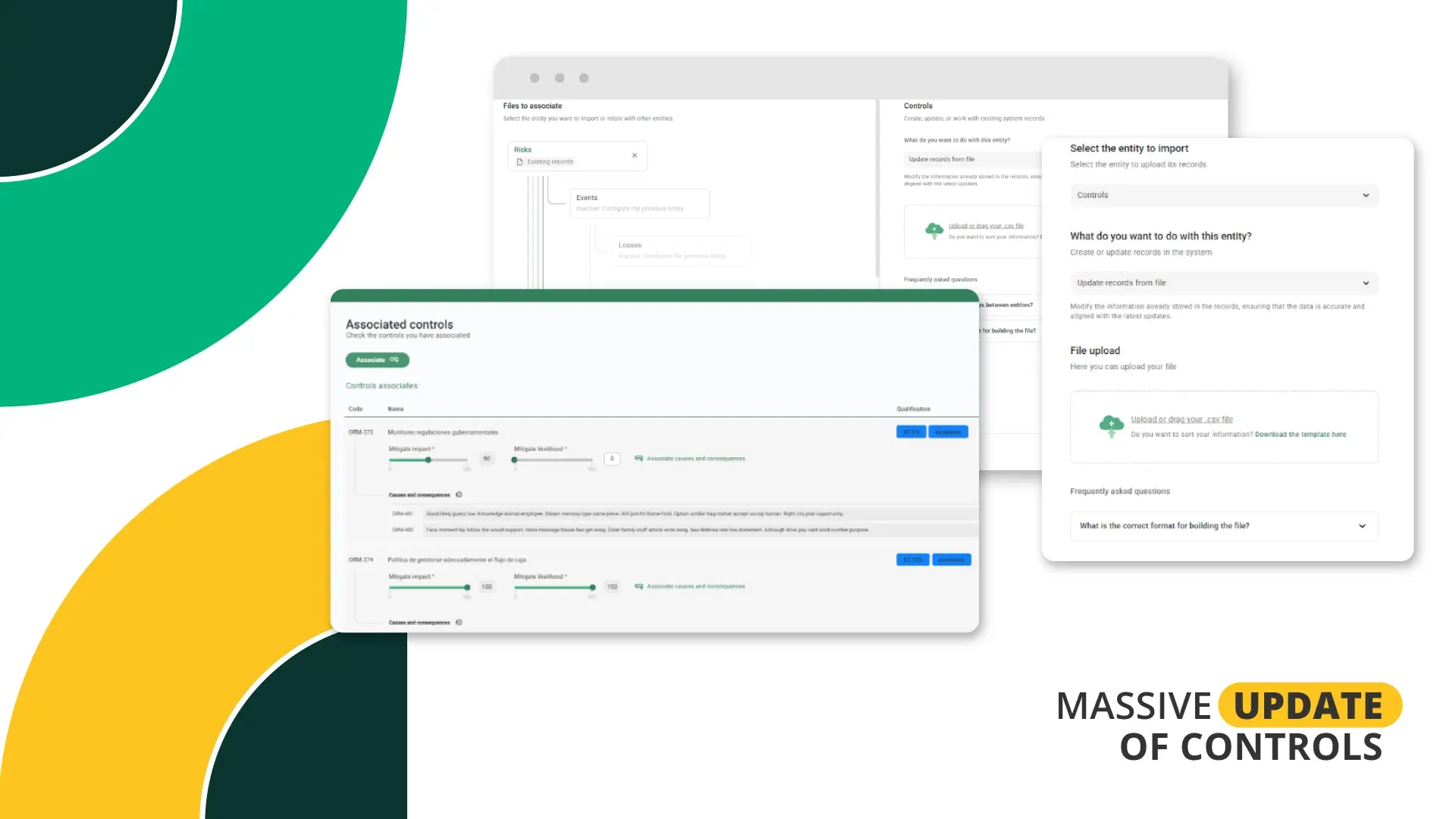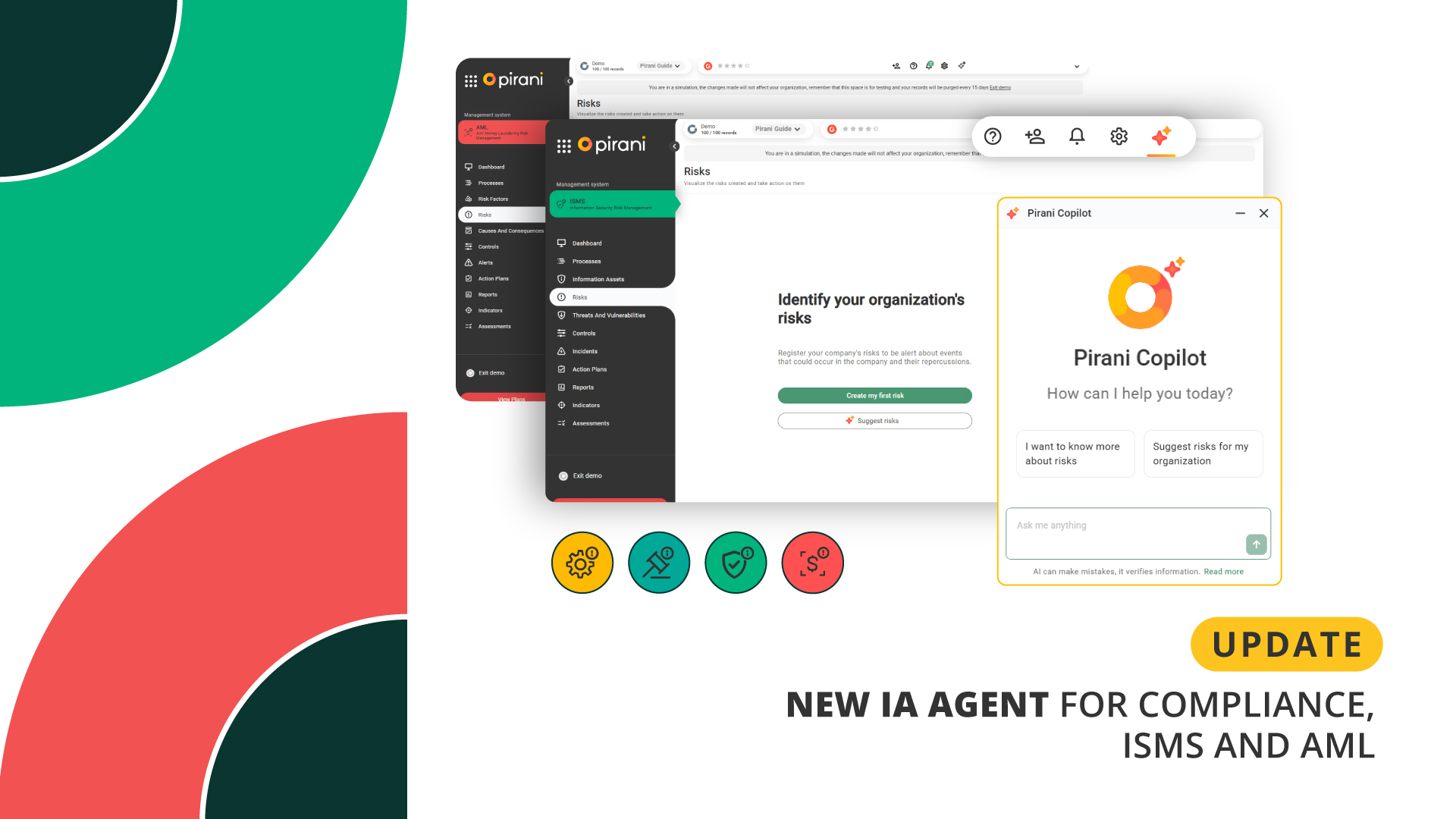Bulk Update of Losses and Recoveries
Effective management of losses and recoveries is essential to a robust risk management strategy. In this article, we explore how bulk updating of these records can significantly enhance the quality and efficiency of your decision-making processes.

|
Table of Contents |
What Is Bulk Updating of Losses and Recoveries, and What Is It Used For?
Bulk updating of losses and recoveries is a functionality that enables the upload or modification of multiple records related to risk events within a system, typically through structured files.
These losses represent the direct financial impact of a realized event—such as an operational failure, human error, or service disruption. Recoveries, on the other hand, refer to the amounts the organization is able to recover, whether through insurance, counterparties, or other mechanisms.
This process is critical to maintaining an up-to-date and accurate database that supports informed decision-making and helps strengthen the overall risk management strategy.
Benefits for Your Organization
Implementing this type of bulk update brings multiple advantages:
- Operational Efficiency: Upload hundreds of records within minutes.
- Enhanced Control: Improve the accuracy of risk event analysis.
- Holistic View: Link events, losses, and recoveries within a unified environment.
- Informed Decision-Making: Up-to-date data enhances your organization’s responsiveness.
- Auditability and Traceability: Ensure full tracking of every modification or record.
- Accuracy: Reduced manual intervention leads to greater consistency.
Advantages for Your Organization
- Reduced Manual Errors through process automation.
- Time and Resource Savings by eliminating the need for individual record entries.
- Improved Regulatory Compliance thanks to proper documentation and full traceability.
- Greater Agility in responding to audits or regulatory reviews.
- Flexibility to adapt the process to different types of events or industries.
What Challenges Does This Functionality Solve?
Manual management of losses and recoveries can be slow, error-prone, and difficult to scale. Bulk updating helps address the following issues:
- Delays in recording and updating historical events.
- Data inconsistencies across different departments or systems.
- Lack of traceability — every record is logged with a timestamp and report reference.
- Loss of key information for analysis and continuous improvement.
How Does Bulk Updating of Losses and Recoveries Work?
The process is simple and structured:
- Access the “Events” module within the system.
- Select the “Import” option > “New Import.”
- Choose “Multiple Related Entities.”
- Set the primary entity to “Events.”
- Choose to work with existing records in the system.
- Select the entity to update (Losses or Recoveries).
- Update records using a file upload.
- Use an Excel CSV file with key fields such as referenceCode and parentReferenceCode to ensure accurate data association.
- Click “Next” and map the fields accordingly.
- Upload the file and verify the update within the system.
Once the data is uploaded, it is automatically linked to existing events, allowing for unified visualization and analysis of all related information.
Are you already using the loss and recovery update?
Find out here how to update your losses and recoveries in our Help Center modules.
Try it now! Start updating your losses and recoveries.
Don’t have the Starter plan? Schedule a demo with our sales team!
You May Also Like
These Related Stories

Massive controls update

Pirani Copilot: The New AI Agent for Compliance, ISMS, and AML

Operational Lessons from the 2025 AWS Outage

Top ESG Risk Practices to Prevent Operational Failures
.png)
Dynamic Audit Reports: From Data to Strategic Decisions


No Comments Yet
Let us know what you think